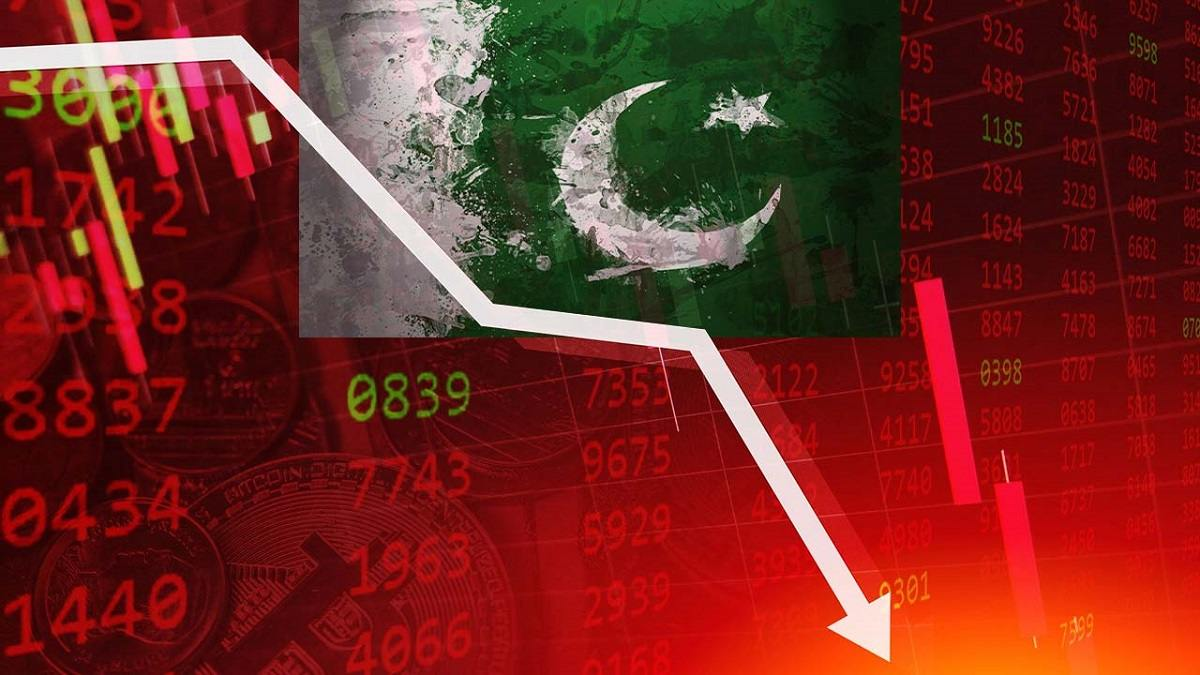Pakistan is facing an unprecedented economic crisis as its total debt surged by PKR 4,303 billion within the first eight months of the current government’s tenure.
This increase has pushed the total debt to a staggering PKR 70.36 trillion as of October, raising significant concerns about the country’s financial stability.
While domestic debt saw a sharp increase, external debt showed a slight decrease, reflecting deep structural challenges within Pakistan’s economy.
The Soaring Debt and Fiscal Instability
Official reports indicate that Pakistan’s debt rose from PKR 64.810 trillion in February to PKR 69.114 trillion by October. This surge was primarily driven by domestic borrowing, which increased by PKR 4,556 billion. Consequently, domestic debt rose to PKR 47.231 trillion, compared to PKR 42.675 trillion just a few months earlier.
On the other hand, external debt saw a marginal decline, dropping from PKR 22.134 trillion to PKR 21.884 trillion. This decrease can be attributed to reduced external borrowing amidst growing reluctance from international financial bodies to extend further loans.
Despite this minor reprieve, the overall debt burden has continued to climb, raising questions about the government’s ability to manage its fiscal affairs effectively.
Read : Pakistan Gets $330 Million Loan from ADB Amid World Bank’s $500 Million Loan Cancellation
Adding to the country’s woes, the World Bank recently withdrew over USD 500 million in budget support, citing Pakistan’s failure to comply with key financial conditions.
Read : World Bank Report: Maldives Has Spent Beyond Means and Faces High Debt Distress Risk
These included renegotiation of power agreements under the China-Pakistan Economic Corridor (CPEC) framework. The World Bank also announced that it would not provide new budget support for the current fiscal year, significantly impacting Pakistan’s ability to secure external funding.
World Bank Loan Cancellations and Economic Fallout
The World Bank’s decision to halt financial support has delivered a significant blow to Pakistan’s already fragile economy. The withdrawal of budget support highlights the country’s inability to meet crucial conditions required for financial assistance. As a result, Islamabad’s earlier projections of receiving an additional USD 2 billion in loans have been severely undermined.

This development comes at a critical juncture when Pakistan’s debt sustainability is under immense scrutiny. The World Bank’s reluctance to extend loans reflects its concerns over Pakistan’s mounting debt levels and its limited capacity for repayment. Moreover, the move has further eroded investor confidence, exacerbating the economic uncertainty gripping the country.
Federal government obligations have also surged sharply. In just the first two months of the fiscal year, government debt rose by PKR 1,448 billion, including an increase of PKR 739 billion in August alone.
Data from the State Bank of Pakistan (SBP) reveals that the federal debt rose by a total of PKR 6,392 billion between September 2023 and August 2024. This continuous accumulation of debt underscores the persistent fiscal challenges facing Pakistan.
Domestic Debt Surge and Structural Economic Challenges
While external debt has decreased slightly, the dramatic increase in domestic debt remains a cause for concern. By October, domestic debt accounted for PKR 47.231 trillion, a significant jump from PKR 42.675 trillion in February. This sharp rise reflects the government’s increasing reliance on domestic borrowing to finance budget deficits and meet its expenditure requirements.
Domestic debt now forms a significant portion of Pakistan’s total debt burden, highlighting the structural imbalances in the country’s fiscal policies. The reliance on domestic borrowing has led to higher interest payments, further straining government finances and leaving limited fiscal space for development expenditures.

Meanwhile, external debt remains substantial, despite the marginal decline to PKR 21.884 trillion. Pakistan’s limited access to international loans has forced the government to rely more heavily on domestic borrowing, pushing the economy further into a cycle of debt accumulation. This unsustainable fiscal path has raised alarms about the country’s ability to service its debts in the long term.
The current economic crisis has been exacerbated by global economic conditions, domestic political instability, and structural inefficiencies. With inflation at record levels, a depreciating currency, and dwindling foreign exchange reserves, Pakistan’s economic challenges have reached a critical tipping point.
Pakistan’s debt surge of PKR 4,303 billion amid an ongoing economic crisis reflects deep-rooted fiscal and structural challenges. While domestic debt has risen sharply, the marginal decline in external debt has done little to alleviate concerns about the nation’s financial stability.
The World Bank’s withdrawal of budget support underscores the urgent need for Islamabad to address its economic vulnerabilities and implement meaningful reforms.
As the country grapples with rising debt levels, the focus must shift toward sustainable fiscal policies, increased revenue generation, and reducing dependence on borrowing. Without decisive action, Pakistan risks further economic instability, which could have long-term consequences for its financial future.

